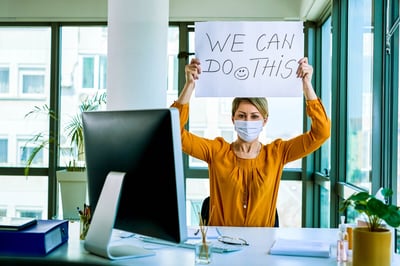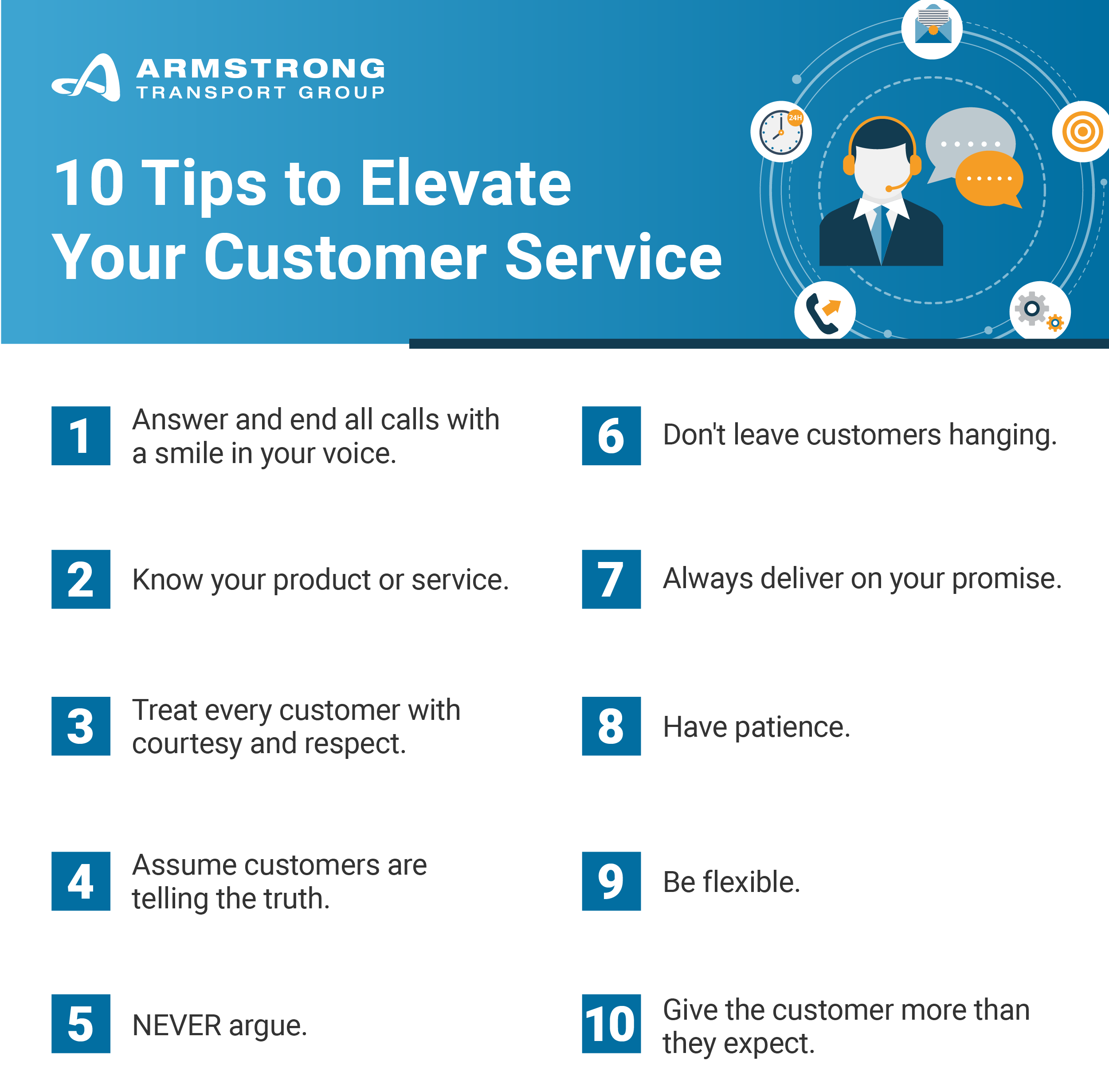How to Make Customer Service More Than Lip Service
Agency Ownership | Logistics | Transportation | Best Practices | Freight Management | Freight Broker
Perhaps more than any year before it, 2020 put the spotlight on customer service. A global pandemic drove confusion, fear, and anxiety among consumers. While economies were nose-diving, demand for certain products skyrocketed as never before.
Corporations adapted quickly to unprecedented situations for which there weren't always clear answers. To survive, many organizations needed to look at customer engagement and service in new ways. Social distancing mandates meant that consumers moved their spending online, making the "try before you buy" approach nearly impossible. There were new questions to ask and answer, and it became clear that technology would only play a more significant role in the consumption of goods and services.
 Even in the logistics industry, where the only constant is change, shippers faced – and continue to see – skyrocketing shipping prices. At the same time, carriers considered their safety as governments urged communities to stay closer to home. For brokers, margins were tight, and the room for error was tighter. The world was operating on a razor's edge.
Even in the logistics industry, where the only constant is change, shippers faced – and continue to see – skyrocketing shipping prices. At the same time, carriers considered their safety as governments urged communities to stay closer to home. For brokers, margins were tight, and the room for error was tighter. The world was operating on a razor's edge.
In this post, we'll cover how the customer service landscape is changing amid industry volatility, how leading companies prioritize service levels, and a few tips to ensure your organization can follow through on its commitment to supporting a service-centric culture.
The Changing Landscape of Customer Service
Customer service is a phrase that gets thrown around and is often misused. How many companies can back up claims that they provide customers with the best experiences? Is customer service just lip service?
 Organizations with the best intentions recognize that high service levels can mean the difference between building a long-term relationship with customers or ending one. Yet consumer expectations are only increasing in today's always-on, fast-paced world. And companies navigating growth may find themselves in a pressure-cooker scenario – balancing unprecedented workload and deliverables with mounting pressure from end-users.
Organizations with the best intentions recognize that high service levels can mean the difference between building a long-term relationship with customers or ending one. Yet consumer expectations are only increasing in today's always-on, fast-paced world. And companies navigating growth may find themselves in a pressure-cooker scenario – balancing unprecedented workload and deliverables with mounting pressure from end-users. 
Is it reasonable to believe organizations can keep up with customer demand? When Amazon promises goods delivered to your doorstep same-day, another company's 5-7 day shipping window seems unreasonable in comparison. Waiting seems egregious. Yet, that's the nature of competition. If you can't deliver, certainly your competitor can.
Increasingly, modern consumers have an adverse reaction to waiting. Even amid a desire for more personalized goods and services, there is a growing expectation that those too can be delivered faster. Organizations are forced to tailor products and solutions to their customers' specific needs in more creative ways.
Building a Customer Service Culture
Providing the highest levels of satisfaction to customers needs to be a proactive choice. Organizations should always be asking: What can we do better for our customers? How can we meet our customers' needs and expectations without compromising the products or services we offer?
 It's also an evolving process. Just providing exceptional customer service is no longer sufficient. Learning to anticipate demand is essential to ensuring customers feel heard and understood. Responding empathically to issues is the only way to ensure customers don't feel like a number. To do this effectively, organizations need to truly understand their customers – what motivates them, what impedes them, what do they want that other companies cannot offer?
It's also an evolving process. Just providing exceptional customer service is no longer sufficient. Learning to anticipate demand is essential to ensuring customers feel heard and understood. Responding empathically to issues is the only way to ensure customers don't feel like a number. To do this effectively, organizations need to truly understand their customers – what motivates them, what impedes them, what do they want that other companies cannot offer?
In this blog, Elen Veenpere posts about the importance of building a strong customer service culture without copying companies like Nordstrom or Disney. "Trying to adopt the ideas and techniques from someone else will not magically work for you. Culture is not something you can fake."
But some strategies and tactics can serve organizations well:
- Encourage strong communication from the inside out. Creating an environment that promotes strong communication – both listening and sharing – helps support superior service. It's a trickle-down effect. If your employees have a voice and feel valued, they will be more apt to do the same for your customers.
- Teach what you preach. What seems evident to you may not be to others. Simply telling your employees that they need to have empathy and product knowledge won't be enough. The best customer service programs are designed around continuing education to ensure that employees have access to the same information and expectations. Allowing a third party to assist with your training needs can be essential to your customer service program's success.
- Innovate at pace. Devising innovative ways to meet customers' changing needs will entice customers to work with you unless you take it too far. In a world where intelligent technologies – like automation and machine learning – are adopted to create efficiencies, don't neglect a good old-fashioned phone call. Giving your customers direct access to a human can help alleviate issues or anxieties.
- Capture essential data. Create a system that helps your employees capture information from their customer interactions. This may be some of your organization's most valuable data. Following up on those interactions helps customers feel valued.
In our efforts to promote continuing education, Armstrong recently partnered with UNC Charlotte for a deep dive into delivering exceptional customer service. Hosting interactive sessions like these allows employees to hear what is happening across departments and the organization at large. It also provides reminders of how customers expect to be treated – especially in difficult or stressful situations.
Providing exceptional service is making every effort to go above and beyond what your customer or client expects. Showing empathy – ensuring that you understand what your customer is experiencing – and committing to making this the best experience they've had is essential. Here are a few helpful reminders to help you elevate your service skills:

Want to Learn More?
At Armstrong, we operate in a competitive market where we know that customers can take their business elsewhere. To drive loyalty, we strive to be a credible partner and resource. Our team comprises industry leaders who prioritize engaging with our customers to understand better the evolving demands they face.
Complaints, issues, and dissatisfaction happen, and to say otherwise would be misleading. However, we promote a culture that is open to failure by constantly questioning "the way things were always done." Mistakes are the result of neglect, poor decision-making, or wrongdoing. We try to avoid mistakes. Failure is about testing solutions and approaches we think will work but being willing to admit when they don't. We don't fear failure.




